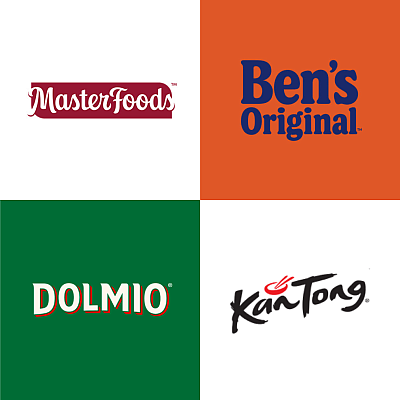From a handful of M&M’S® to a chocolate-draped SNICKERS® bar, chocolate is at the heart of our company’s storied heritage and the delicious core of many of our confections. That means we’ll take any excuse we can to celebrate it, including World Chocolate Day on July 7.
To celebrate, we’re pulling back the chocolate curtain to explain how cocoa beans become chocolate, as well as our ongoing efforts to more sustainably source cocoa through partnerships with our suppliers, governments, academics and more. We want you to be able to observe World Chocolate Day with your favorite Mars chocolate product in hand—for generations to come.
Cocoa, from tree to treat
Producing chocolate is a real labor of love: Cacao trees take approximately seven years to fully mature, and only about 10% of the blooms from each tree are quality enough to be used for chocolate. For cacao trees to flourish, they need to grow in hot, humid conditions that get plentiful year-round rainfall and shade. Cocoa beans are the seeds of the fruit grown on cacao trees, and surprisingly, when these seeds are initially harvested, they taste nothing like the chocolate you may know and love – they’re actually very bitter. After harvest, things don’t get much simpler. Through a series of processing steps, both on the farm and in factories, cocoa beans undergo a transformative journey to develop the intricate flavor profile we associate with chocolate.
Now, let’s delve into the sweet world of chocolate production from the farm to finished product.
Step 1: Harvest – Farmers remove ripe/mature cacao pods from the trunk and branches of the tree, being careful not to damage the tree or the fruit.
Step 2: Pod Opening – Cacao is a fruit, and the beans inside the pods are its seeds. The pods are split to release the beans, which are embedded in a white sweat viscous pulp. After collecting the beans, the pod husks return to the field to be used as fertilizer!
Step 3: Fermentation –Cocoa beans – still covered in pulp – are then fermented to develop the foundation of the chocolate flavor we all expect in our favorite chocolates. The process of fermentation and the time involved varies by producing country. For example, in West Africa and other origins, the cocoa beans in pulp are fermented in heaps or piles covered with banana leaves.
Step 4: Drying – The beans dry for about seven days, either in the sun or with mechanical dryers.
Step 5: Bean Cleaning –. Once dry cocoa arrives to a processing site, the first step in the process is bean cleaning where non-cocoa material and impurities are removed.
Step 6: Roasting – Roasting unlocks the characteristic cocoa flavor and aroma we all love!
Step 7: Grinding – After removing the cocoa bean’s thin outer shell, two discs grind the cocoa beans into a paste.
Step 8: Separating cocoa butter from cocoa – A hydraulic press separates the ingredients, allowing us to control how much rich cocoa butter we add to the cocoa.
Step 9: Mixing up the chocolate liquor – Depending on the product, we add ingredients like milk powder and sugar to whip up the perfect mixture.
Step 10: Conching – This process uses machinery and emulsifiers to transform the chocolate mixture from gritty to velvety.
Step 11: Tempering – When melted chocolate hardens, it typically becomes crumbly and loses its shine. Tempering brings its shine back and gives chocolate that satisfying snap.
Science to the rescue
Due to threats like climate change and deteriorating soil health, as well as pests and diseases that have long plagued the fragile crop, cocoa production poses many difficulties for growers. With an estimated 40% of the annual cocoa crop yield loss due to pests and diseases, cocoa is not guaranteed to survive without human intervention.
As cocoa faces these debilitating challenges, Mars is proud to be an industry leader in cocoa science and technology. Thanks to the work of our Science & Technology teams, we house over 80% of the world's genetic diversity of cocoa at our Mars Cacao Germplasm Greenhouse facility located at the University of California, Davis. The work here helps us identify which trees to plant where to produce higher, more consistent cocoa yields. And, we’re working on developing a new generation of climate-smart cocoa plants that are more drought-resistant and durable against pests and diseases – this helps lead to a secure future for cocoa – and chocolate.
“We are not just growing trees in our greenhouse. We are growing a research and breeding ecosystem capable of generating visibility and opportunity for the cacao tree, for cocoa farmers and for the cocoa supply chain,” explained Ashley Duval, Senior Scientist, Mars Science & Technology.
For Mars, helping make the crop more sustainable has always been the goal. In 2010, we made cocoa history when our team completed the sequencing of the cocoa genome, providing deep insight into what makes cacao unique from other plants. After sharing that revolutionary scientific feat(Opens a new window) with anyone who wanted it—including our competitors—the world now benefits from information that will help build healthier crops.
Going beyond the chocolate
Ongoing efforts in plant breeding come with social and environmental impacts as well. Cocoa for Generations—our comprehensive cocoa sustainability strategy—aims to tackle these issues as we work to help preserve forests and tackle human rights issues in the supply chain.
“Our work aims to ultimately develop the planting materials and best practices to help improve the livelihoods of the approximately 350,000 cocoa farmers in our supply chain, while reducing the environmental footprint of cacao cultivation in the tropics by producing more on less land,” Duval shared.
So, next time you pick up a pack of M&M’S® or a MILKY WAY® bar, say a little “thanks” to the incredible Mars scientists and to the farmers in our cocoa supply chain that helped to make it all happen.
















